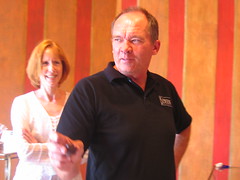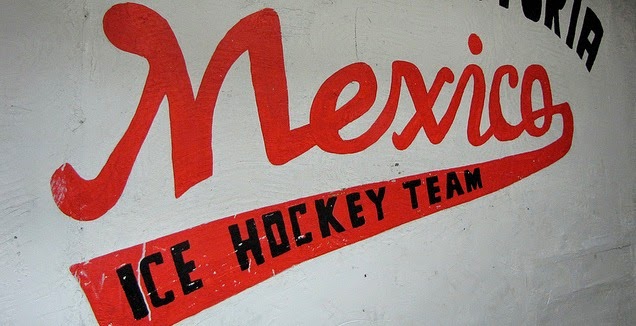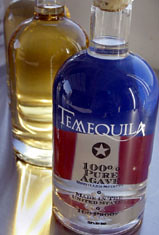
Story by : David Agren
Chocolatier Michael McKenna arranges six handmade truffles for an impromptu tasting session at his new Ajijic store like a sommelier would with fine wines. He recommends a cappuccino truffle - made with coffee cream ganache and dipped in dark chocolate - to start. He finishes with a creation dubbed Camille; a lemon cream ganache with perfume of rosemary, dipped in white chocolate with rosemary sprinkles.
The founder of Sensual Chocolatiers compares slowly indulging one of his truffles to sipping a fine wine.
"It's like wine where there's a beginning, a middle and an end," he explained. "As you taste it, more flavors emerge."
McKenna recently expanded his San Miguel de Allende-based chocolate business into the Lakeside area, opening an outlet in Ajijic after a year of searching for an ideal location -- meaning a spot lacking direct sunlight -- and overcoming shipping problems.
"The biggest problem was transporting chocolates in Mexico," he said.
To keep his chocolates from melting during the six-hour journey from the Bajio to Lakeside, he now packs the truffles in specially-designed Styrofoam coolers.
Sensual Chocolatiers' small Ajijic store sells dark, milk and white chocolate truffles and keepsake boxes, designed by McKenna and his partner Barbara Hartinger, a graphic designer.
Although each store offers approximately 20 different truffles at any given time, Sensual Chocolatiers' kitchen produces more than 200 varieties, which include traditional combinations like dark chocolate and orange and eclectic fusions like white chocolate and guava. Always looking to make something creative and incorporate Mexican delights in his truffles, McKenna's ingredient list includes mango, guayaba and coffee roasted in Ajijic by Jose Romero of the Oaxaca Coffee Company. And, of course, he uses cocoa from Oaxaca, a gritty, but flavorful product, which he mixes with fine imported chocolates. Some of his best creations though resulted from either accidents or pure experimentation.
"It's pretty much alchemy," he said laughingly.
"It's definitely an art -- a very complicated art."
It's also becoming a big business, with orders flowing in from fine hotels, San Miguel de Allende civic officials, the Guanajuato state government and even Los Pinos (the president's residence).
While uncertain of exactly how his truffles ended up in Los Pinos, McKenna suspects President Vicente Fox (a former governor of Guanajuato) tasted a chocolate at a wedding or that the mayor of San Miguel de Allende presented truffles as a gift. Los Pinos now gives Sensual Chocolatiers' truffles as gifts to visiting dignitaries.
"(The San Miguel de Allende municipal government) has been good to us," McKenna said.
"They've introduced us to a lot of contacts."
McKenna will open a new 500-square-meter kitchen in Jalpa, a pueblo near San Miguel de Allende later this month to meet the growing demand of supplying his four retail outlets and fulfilling wholesale orders. It will also offer badly needed jobs for local women, many of whom head households while their husbands work in the United States.
"One of our goals is to provide employment," McKenna explained.
An unconventional workplace, McKenna's employees participate in the kitchen's hiring decisions and even name many of the truffles they create. One employee christened a milk chocolate and espresso creation, "Sexy." Some truffles like "Rosa Mexicana" are named after the women who created the treats. In the case of the "Catalina" truffle, the namesake inadvertently created a caramel brittle "while daydreaming at the stove." The brittle was mixed with coconut to make a popular truffle.
"Everyone is free to say, 'I have an idea,' " McKenna said.
The management approach, in part, comes from the fact McKenna never set out to build a chocolate empire in Mexico. Originally from Hamilton, Ontario, he ran a successful industrial heating business prior to moving to Mexico. Although he never formally studied confectionery, McKenna has long made his own candies.
"I liked to cook and I had a sweet tooth," he said of his motivations.
McKenna started making truffles four years ago as a hobby, selling his first batches from a tray at the San Miguel de Allende public library. He later opened his first stores in the Bajio, a region with a dry, moderate climate ideal for making and selling chocolates.
If he finds a location without direct sunlight, McKenna will open his next retail store in Puerto Vallarta.
Each week, Sensual Chocolatiers produces 4,000 to 5,000 truffles. But even with that production, his inventory often runs low.
"There are times we don't have a single chocolate in our stores," he said.
While some chocolate makers freeze their products for future sales, Sensual Chocolatiers only sells freshly made truffles. Products stay in the display case for only 10 days. The quality becomes evident after slowly enjoying a truffle. More than 15 minutes after finishing the small indulgence, "You'll still taste it."
From the Guadalajara Colony Reporter


